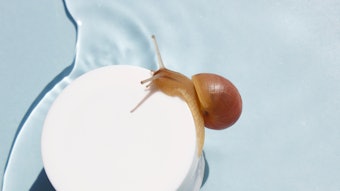In the past few years, the at-home beauty device market—including devices for cleansing, hair removal and light therapy, among others—has seen a boom, which is expected to grow according to a report by Kline & Company. However, a recent study by Brian S. Biesman, MD, in Lasers in Surgery and Medicine, has found at-home, hot-wire, hair removal devices to be no better than shaving at improving density and reducing regrowth rate. It should be noted that the research was funded by Tria Beauty, manufacturers of an at-home laser hair removal device.
Biesman, who is affiliated with the Nashville Centre for Laser and Facial Surgery and Vanderbilt University Medical Center, and additional clinical staff treated 22 volunteers with the hot-wire device (no!no!) according to its instructions for use on the lower leg two times per week for 8 weeks. An adjacent site was shaved with a razor blade on the same schedule to provide a control. Subjects were followed for 3 months after the last treatment to study the durability of the results. Standardized high-resolution photographs were made at baseline, once a week during treatment, and monthly during the post-treatment follow-up period. Micro-tattoos were used to ensure treatments and photographs were reliably made in the same anatomical location from visit to visit. Both active and control sites were shaved prior to baseline and allowed to regrow for a fixed period of time before first treatment to provide a consistent and well-defined baseline hair condition. Quantitative hair counts were made by a third party from the photographs and standard statistical analysis was performed to look for differences between the active and control sites. Visual assessments and quantitative analysis was also performed on the photographs to see if there were any differences in hair thickness (diameter) and hair color between the active and control sites.
The results show that shaving and the hot-wire device are indistinguishable in short-term or long-term effect, based on both visual assessment of the photographs and statistical analysis of the hair counts. The control (shaving) had a mean baseline hair count of 79.4, which remained stable (74.8–84.3) during the 8 week-treatment phase and climbed substantially after stopping treatment to 98.8, 100.1, and 104.6 at 1, 2, and 3 months post-treatment, respectively. The active (hot-wire device) had a mean baseline hair count of 86.0 which remained fairly stable (81.7–95.1) during the treatment phase and then climbed substantially after stopping treatment to 104.0, 106.4, and 109.0 at 1, 2, and 3 months post-treatment, respectively.
The difference in hair counts between the control and shaving showed that (a) in the treatment phase, shaving was slightly more effective at hair removal than the hot-wire device with weak statistical significance (P < 0.05 at 5 of 7 time points) and (b) in the follow-up phase, shaving and the hot-wire device were statistically indistinguishable (P = 0.252, 0.0972, and 0.230 at 1, 2, and 3 months, respectively). Likewise, the difference in percentage change from baseline in hair counts (which normalizes to baseline values) between the shaving control and hot-wire device is close to zero at every time point (−4.9% to +4.9%) and the t-test P-values are high (0.154< P < 0.890 over all the time points in the study and 0.360 < P < 0.890 during the 1, 2, and 3 month follow-up period), indicating no detectable difference between shaving and the hot-wire. In terms of hair characteristics, no difference in hair color or hair thickness was seen between the shaving control and the hot-wire sites in the treatment or follow-up period.
The author, therefore, concluded that the hair removal device did not lessen hair density of decrease hair regrowth rate compared to shaving.










